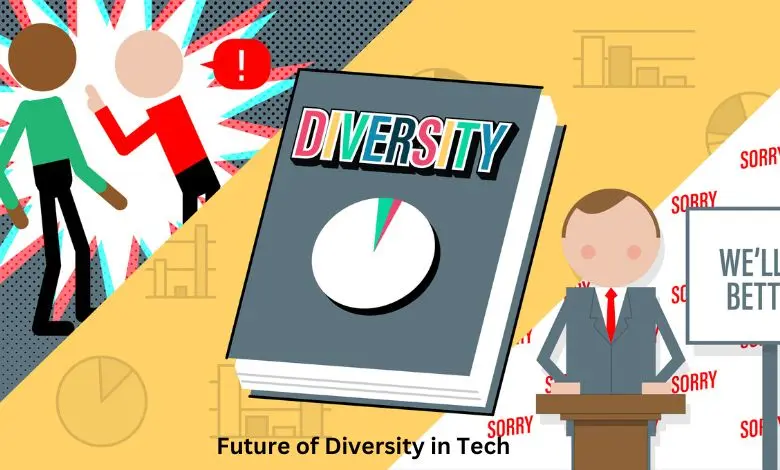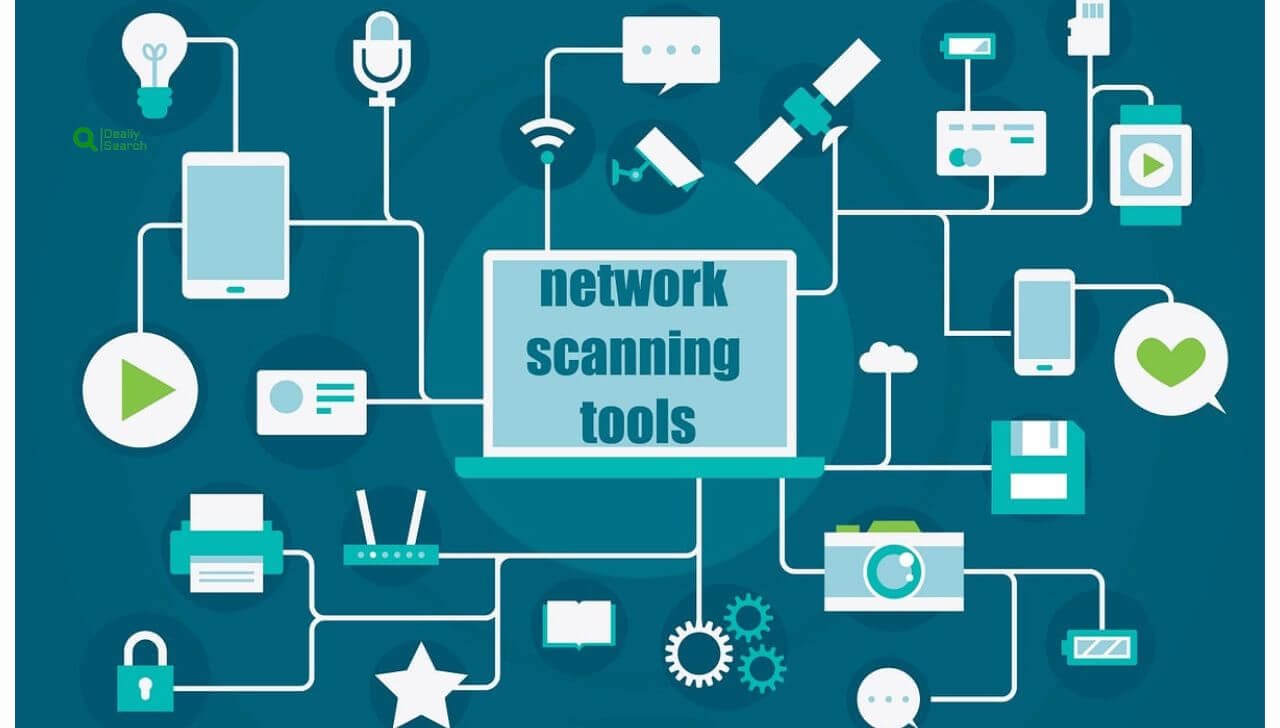The Importance of Pushing for Diversity in Tech: Driving Change

As technology continues to shape our world, the industry behind it must reflect the diversity of society. The tech industry has long been criticized for its lack of diversity, with women and minority groups being underrepresented in various roles. I will delve into the significance of pushing for diversity in the tech industry, exploring the benefits it brings, the challenges and barriers that exist, strategies for promoting diversity, successful initiatives and case studies of diverse tech companies, the role of leadership in driving diversity, the impact of diversity on innovation and creativity, and the resources and organizations supporting diversity in tech. Join me as we explore the driving force behind change in the tech industry.
Understanding Diversity in Tech

Understanding diversity in tech is crucial for fostering innovation, inclusivity, and equal opportunities in the industry. A diverse workforce brings together individuals from different backgrounds, cultures, and experiences, leading to more creative problem-solving and a broader range of perspectives. However, challenges such as gender disparity, racial bias, and accessibility barriers still persist in the field. Encouraging diversity requires proactive measures, including inclusive hiring practices, mentorship programs, and supportive workplace environments. By prioritizing diversity, the tech industry can create more equitable solutions that cater to a global audience while driving technological advancements that benefit everyone.
What is Diversity in Tech?
Diversity in tech refers to the inclusion of people from different racial, ethnic, gender, and socioeconomic backgrounds in the technology industry. It also encompasses accessibility for people with disabilities, neurodiverse individuals, and those from non-traditional educational paths.
The tech industry remains largely homogenous, with a significant gender and racial disparity. Women, Black, and Hispanic professionals are underrepresented, particularly in leadership and technical roles. Despite efforts to increase diversity, many companies still struggle with achieving equitable representation.
The Evolution of Diversity in the Tech Industry
Historically, the tech industry has been male-dominated, with white and Asian men making up the majority of the workforce. The lack of diversity can be traced back to systemic barriers in education and workplace culture.
Over the years, efforts such as diversity hiring initiatives, STEM programs targeting underrepresented groups, and corporate diversity reports have attempted to address these disparities. While progress has been made, there is still much work to do in achieving a truly inclusive tech landscape.
Why Diversity in Tech Matters

Diversity in tech matters because it fosters innovation, improves problem-solving, and ensures technology is accessible and beneficial to everyone. When people from different backgrounds, cultures, and experiences collaborate, they bring unique perspectives that lead to more creative and effective solutions. A diverse tech industry also helps to reduce biases in technology, making products and services more inclusive for a global audience. Moreover, promoting diversity creates equal opportunities, empowering underrepresented groups and strengthening the industry as a whole. By embracing diversity, the tech world can build a more fair, innovative, and user-friendly digital future.
Fostering Innovation and Creativity
A diverse workforce brings different perspectives, which enhances creativity and innovation. Diverse teams can approach problems from multiple angles, leading to better solutions and a wider range of ideas.
For example, research has shown that companies with diverse teams outperform homogeneous teams in innovation, decision-making, and problem-solving. Companies like Google and IBM have leveraged diverse teams to develop groundbreaking products that appeal to global audiences.
Technology should be accessible and beneficial to everyone. However, when development teams lack diversity, products often reflect the biases of their creators. This has led to major issues, such as facial recognition software failing to accurately detect darker skin tones or AI assistants struggling to understand different accents.
By prioritizing diversity, tech companies can create more inclusive products that cater to a broader audience. Inclusive design ensures that technology meets the needs of all users, regardless of their background.
The importance of diversity in tech

Diversity in tech is not just a buzzword but a fundamental necessity for the industry to thrive and evolve. When we talk about diversity, we refer to including individuals from different backgrounds, experiences, and perspectives. By embracing diversity, the tech industry can tap into a wide range of talents and ideas, fostering innovation and creativity. Diverse teams are more likely to approach problems from various angles, leading to more effective problem-solving and better decision-making. Moreover, diversity promotes fairness, equality, and social justice within the tech industry. It allows individuals from all walks of life equal opportunities to contribute and succeed, breaking down barriers and creating a more inclusive environment.
The benefits of diversity in tech

- It leads to a more inclusive and welcoming workplace culture. When diverse individuals can thrive, it creates a positive ripple effect throughout the organization. This inclusive culture attracts top talent and fosters employee satisfaction and retention.
- Diverse teams bring various perspectives, leading to more innovative solutions. Different backgrounds and experiences spark creative thinking and challenge the status quo, enabling companies to stay ahead of the curve in a rapidly evolving industry.
- Diversity in tech reflects the user base of technology products and services.
Challenges and barriers to diversity in tech
Despite the importance and benefits of diversity in the tech industry, some significant challenges and barriers need to be addressed. One of the main challenges is the lack of representation of women and minority groups in tech roles. This can be attributed to various factors, including unconscious biases in recruitment and hiring processes, a lack of role models and mentors, and a lack of access to quality education and opportunities.
Barrier is the prevalence of a “bro culture” in many tech companies, which can create an unwelcoming and hostile environment for underrepresented individuals. Furthermore, there is a lack of diversity at the leadership level, with predominantly white and male executives making decisions that affect the entire workforce. Overcoming these challenges requires a multi-faceted approach involving changes in recruitment and hiring practices, fostering inclusive company cultures, providing mentorship and support programs, and promoting diversity at all levels of the organization.
Strategies for promoting diversity in tech

- They should prioritize diversity and inclusion as core values and embed them into the company’s mission and culture. This can be achieved through diversity training programs, unconscious bias workshops, and diversity metrics tracking.
- Companies should implement diverse recruitment and hiring practices, such as widening candidate pools, using blind resume screening, and conducting structured interviews.
- Fostering partnerships with organizations supporting underrepresented tech groups can help create a diverse talent pipeline.
- Mentorship and sponsorship programs can guide and support individuals from underrepresented backgrounds, helping them navigate the tech industry and advance in their careers.
- Companies should create a safe and inclusive work environment by addressing biases, promoting open dialogue, and implementing policies that prevent harassment and discrimination.
Successful initiatives and case studies of diverse tech companies
Several tech companies have successfully embraced diversity and reaped the benefits. One such example is Salesforce, a leading cloud computing company, which has made diversity a priority. They have implemented initiatives like the Women’s Network, which supports the advancement of women in the company through mentorship and professional development opportunities. Another example is Microsoft, which has committed to increasing diversity in its workforce through various programs, including the Diversity and Inclusion Report Card, which tracks progress and holds leaders accountable. These initiatives demonstrate that diversity can be achieved and celebrated in the tech industry with the right strategies and commitment.
Resources and organizations supporting diversity in tech
Numerous resources and organizations are dedicated to supporting diversity in the tech industry. One such organization is Girls Who Code, which aims to close the gender gap in technology by providing free coding programs for girls. Another organization is Code2040, which focuses on increasing the representation of Black and Latinx individuals in the tech industry through mentorship and internship programs. Diversity-focused conferences and events, such as the Grace Hopper Celebration and AfroTech, provide networking and learning opportunities for underrepresented individuals in tech. These resources and organizations are instrumental in creating a more inclusive and diverse tech industry, and individuals and companies alike can leverage them to drive change.
The Future of Diversity in Tech

The future of diversity in tech holds great potential as companies increasingly recognize its importance in driving innovation and inclusivity. With growing awareness, more organizations are implementing policies to promote equal opportunities, including diverse hiring practices, mentorship programs, and inclusive workplace cultures. Advancements in technology, such as AI and automation, also present opportunities to reduce biases in recruitment and product development. By prioritizing diversity, the tech industry can build a future where innovation thrives through the contributions of people from all backgrounds, ultimately creating more equitable and impactful solutions for the world.
The Rise of AI and Ethical Technology
As artificial intelligence continues to evolve, diverse perspectives are needed to prevent biased algorithms and unethical tech practices. Ensuring diversity in AI development can lead to fairer and more accurate technology. Remote work has expanded opportunities for diverse talent worldwide. By embracing global talent, companies can benefit from diverse perspectives and ideas. Achieving diversity in tech requires sustained efforts, including continuous education, corporate accountability, and industry-wide collaboration.
Frequently Asked Question
What are some examples of companies successfully promoting diversity in tech?
Companies like Google, Microsoft, and IBM have implemented diversity initiatives such as inclusive hiring practices, employee resource groups, and training programs aimed at reducing bias and increasing representation in the workforce.
Why is diversity important in the tech industry?
Diversity in tech leads to increased innovation, better problem-solving, and the development of products that cater to a wider range of users. A diverse workforce brings different perspectives, which helps companies create more inclusive and effective technology.
What are the main challenges to achieving diversity in tech?
Some common challenges include unconscious bias in hiring, lack of representation in leadership positions, limited access to tech education for underrepresented groups, and workplace cultures that may not be inclusive.
How can companies improve diversity and inclusion in tech?
Companies can improve diversity by implementing unbiased hiring practices, providing mentorship programs, creating inclusive workplace policies, and fostering a culture that supports and values diverse perspectives.
What role does education play in promoting diversity in tech?
Education is crucial in ensuring that people from all backgrounds have access to tech careers. Initiatives like coding bootcamps, STEM programs in underserved communities, and scholarships for underrepresented groups help bridge the gap in tech education.
Conclusion
The future of diversity in the tech industry is promising but requires continued effort and commitment. The importance of pushing for diversity cannot be underestimated, as it brings numerous benefits to individuals, companies, and society. By embracing diversity, the tech industry can foster innovation, create inclusive products and services, and build a fair and equitable workplace culture.
Challenges and barriers still exist, and companies and leaders must address them proactively. By implementing strategies for promoting diversity, learning from successful initiatives and case studies, and leveraging the resources and organizations supporting diversity in tech, the industry can drive change and create a future where diversity is celebrated and valued. Let us embrace diversity and drive change in the tech industry for a more inclusive world.






